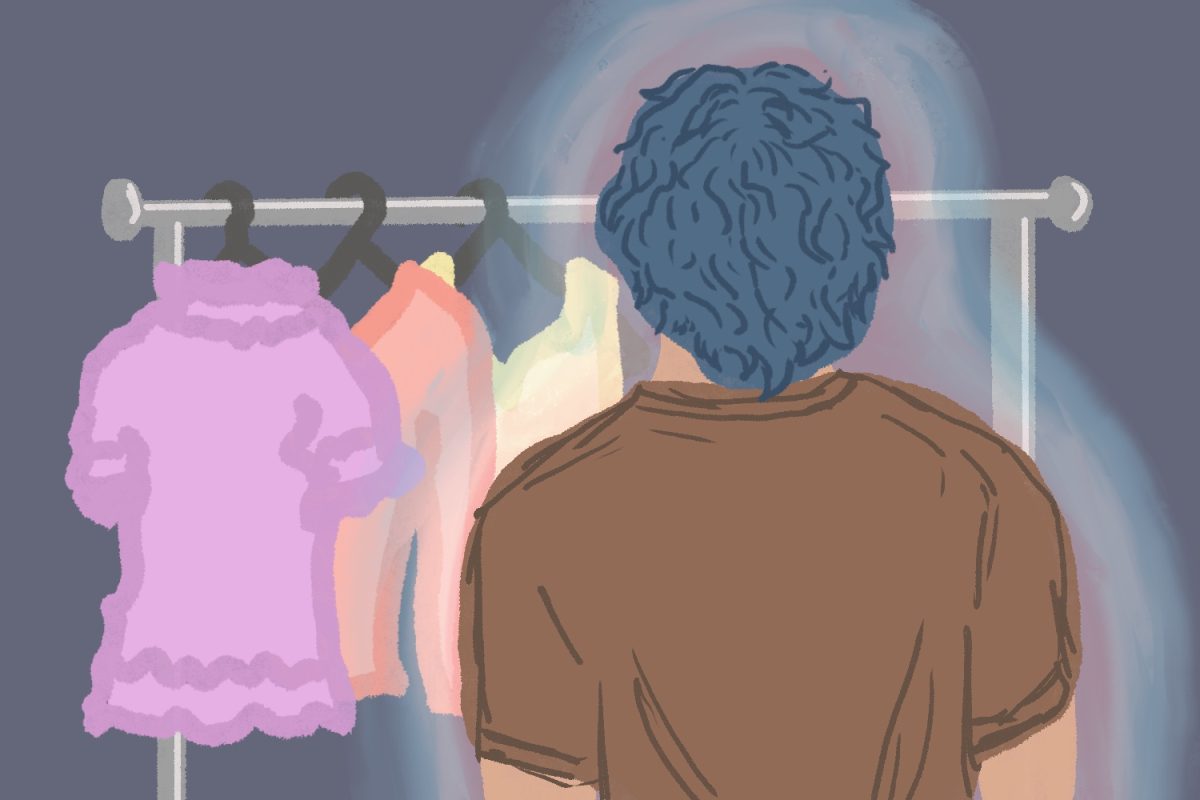You’ve got to be kidding me. I am writing an essay on that same
thing for CollegeHumor,” said Streeter Seidell, Executive Editor and Writer for CollegeHumor Media, in an email.
He was referencing a phenomenon that began in 2007 with the popularization of an image of a chubby, grey cat asking “I can has cheezburger?” and exists today in the continuing popularity of lolcats, Maru, “Play him off, keyboard cat” and the number of adorable kitten videos on Youtube.com. Cats are taking over the internet, and humans are taking notice.
A meme is defined by thefreedictionary.com as “a unit of cultural information, such as a cultural practice or idea, that is transmitted verbally or by repeated action from one mind to another.”
It happens that the current internet culture is strongly grounded in cat memes. There seems to be no logical connection between the domesticated creature and the interconnected system of networks, but there are clear links between the two.
“I have a stand-up bit about how a cat owner invented the Internet so people wouldn’t think he was a weirdo anymore,” Seidell said.
When asked why cats have become the animal of choice, the CEO of the Cheezburger Network, Ben Huh, replied in an email, “I have no idea. But there in lies the secret to virality.”
This appears to be a secret he has unlocked, as his network runs I Can Has Cheezburger?, FAIL blog, Picture Is Unrelated and 38 other sites filled with user-generated content carefully selected to pull readers into hours of procrastination.
An important part of the system used by the Cheezburger networks is that their content is entirely created by their users, making sure each site accurately reflects the culture of the internet.
“One of the things we do in our publishing system is keep both the captioned image and the uncaptioned original so people can drop their own captions on to re-work the image into what they want to say,” said Martin Cron, an employee at I Can Has Cheezburger?, in an email.
This system gives the network access to the ideas of all their readers, leaving those who work there with the job of finding content that is likely to turn into a meme.
“For everything you see on the front page of any of our 40 sites, there were 3-20 submissions that aren’t good enough,” Cron said. “We get over 10,000 image submissions every single day. Seriously.”
That the first site created in this vein is filled almost entirely with pictures of cats shows that they have their claws in the culture of the web. Because on the web, users can instantly acquire and adapt content, making it the perfect vehicle for meme creation.
The content that is adapted and distributed is often quirky. A popular lolcat shows a fluffy kitty entirely filling a trashcan, captioned “Trashcat is not amused.” The offbeat humor of the Internet relies not on subtlety or intelligence, but also on creating a bizarre reality in which insanity is rejoiced.
“It’s the idea of an echo chamber,” Huh said. “Things can be taken out of context and amplified much faster and much louder thanks to technology.”
It is the idea of amplification that is the key component to Internet humor &-&- not wittiness or any of the qualities standard to humor performed in real life.
“As far as the quality of humor on the Internet goes . . . most of it is crap,” Cron said, adding that images and phrases that become memes are the best of the humor on the internet.
Cat humor uses the same properties of amplification and repetition that are parts of general internet humor. There is similarity to each video of Maru playing with boxes, and the format of the “Play him off, keyboard cat” meme never changes &-&- a “fail” video followed with a clip of a cat being manipulated to play the keyboard.
“Many lolcat jokes are in-jokes that don’t immediately make sense to someone outside the community,” Cron said. “Just starting a sentence with “I Can Has’ is a sort of comedic shortcut.”
“I Can Has” is the backbone of the lolcat franchise, as it captioned the first lolcat. This franchise was deconstructed by Cron and Huh, offering a glimpse into the history behind a popular cat meme.
The grammar used in lolcats can be traced to usenet, an internet forum founded in 1980 wherein threads of conversation are grouped into categories. In the categories rec.pets.cats and rec.pets.cats.community, users would role-play as cats, conversing in the grammar that is now associated with lolcats, Cron said.
Later, users of the image-based internet bulletin board 4chan.org connected the broken grammar, called meowchat, with cat pictures, and created lolcats.
“It originated from 4chan.org’s NSFW image board from a weekly event called
Caturday,” Huh said.
Cron describes Caturday as a theme topic where “users would post pictures of cats with funny captions on them.” The original founders of I Can Has Cheezburger? saw these images, and found them funny enough that they wanted to share them with the Internet outside of this forum community.
“They wanted to let people look at lolcat pictures without having to wade through porn and profanities,” Cron said.
Brad O’Farrell, the creator of the “Play him off, keyboard cat” meme, said in an email that when creating a meme, it was important to consider the triad the Internet has the most interest in: “sexy humans, implied violence and cute animals.”
When the page views of his first video, entitled “cool cat playing the keys” spiked, O’Farrell noticed that people were making references to memes, and knew his audience was the type that would be inclined to create more memes and further perpetuate his video.
“When I noticed all this, I quickly sent the video to the YouTube editor to be promoted, and optimized the meta-data to be more effective while in mass promotion,” O’Farrell said. “That mostly came down to changing the thumbnail to the cat itself; people are more likely to click on cat thumbnails than non-cat thumbnails.”
It was simple things, like making sure the audience could see that they were looking at a cat video, that made “Play him off, keyboard cat,” a meme, O’Farrell said. He also made sure to make the format of the video simple, just a clip tacked on to another video, so that it could easily be copied by others.
Huh likened lolcat humor to other forms of humor, like stand-up comedy.
“I think it’s even more creative and original as it has many more constraints and limitations,” he said.
“Having the text on the picture itself, especially in such a cartoony color/typeface (our default is Impact, white, with a thin black border for contrast), helps make the joke more of a visual thing,” Cron said.
Beyond text, it is important that the lolcat image capture a moment of expression that could be identified as human-like.
“The pictures that have been captioned the most are the most expressive, where the cats seem to be displaying a real human emotion,” Cron said.
O’Farrell recognized this dual property of image and text as important to the humor of lolcats, and said he worked on the same principle when he created the keyboard cat meme.
“In a way, Keyboard Cat is a video lolcat &-&- without the text, it’s not applicable to multiple situations, and without the cat, the text isn’t very interesting,” O’Farrell said.
Seidell cites the expressive nature of cats as the primary reason the Internet has taken to them.
“The Internet enjoys nothing more than tearing down the arrogant and the pompous,” Seidell said, “Cats are more pompous and arrogant than any other animal making them a perfect target for ridicule online.”
On the same note, O’Farrell said, “The fact that cats constantly seem to be conveying something vague and passive aggressive makes it so much more satisfying to shove words in their mouths.”
Both Seidell and O’Farrell proposed that Internet users are reflecting so much on the expression of cats and how to take revenge on them for being pompous because they have little else to preoccupy them.
“I also think a lot of people who take to the Internet are not too high on the social ladder in real life so this is their place to vent and settle the score,” Seidell said.
O’Farrell characterized the typical Internet user in a similar way.
“The stereotypical Internet user is such a well-defined concrete image &-&- it’s a loser who majored in computer science in college, is on the fringe of their social groups, probably likes video games, is bad with girls, and lives off parental support or is some kind of man child,” O’Farrell said. “And they probably also like cats, because sad lonely people like cats.”
“So it’s likely that it’s a combination of Internet users stereotyping each other to like cats, and also genuinely liking cats,” he added.
Anthropomorphism was not pioneered as a humor device on the Internet, Cron notes, but has been used since pre-literary times.
“Before lolcats, there was Garfield, before Garfield, there was Mickey Mouse, before Mickey Mouse, we had Aesop’s fables and animistic mythologies,” Cron said.
It is clear that the internet has been conquered by creatures of the feline persuasion, leaving humans only with the print medium. At least hoomins has newspapers, no?















































































































